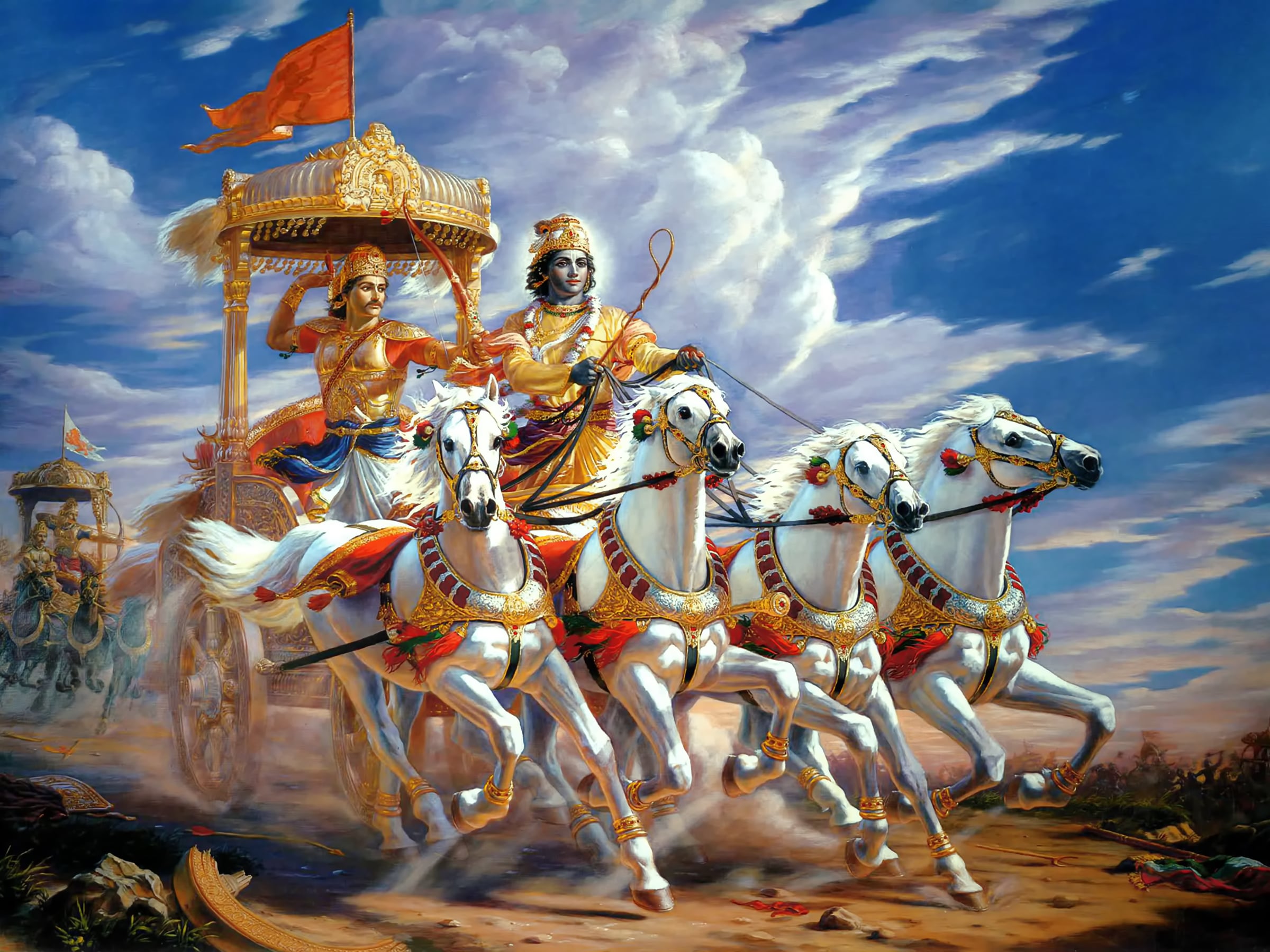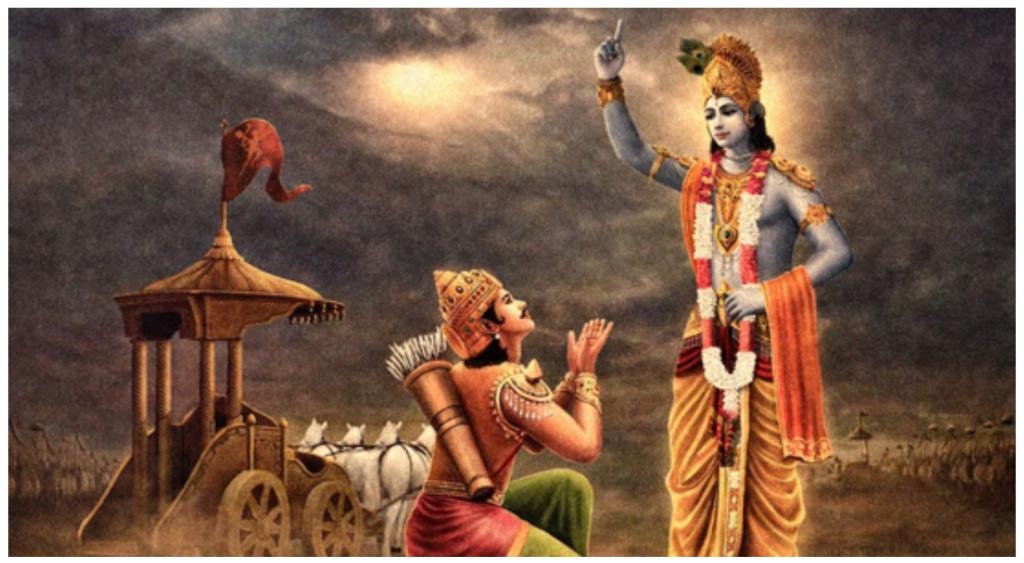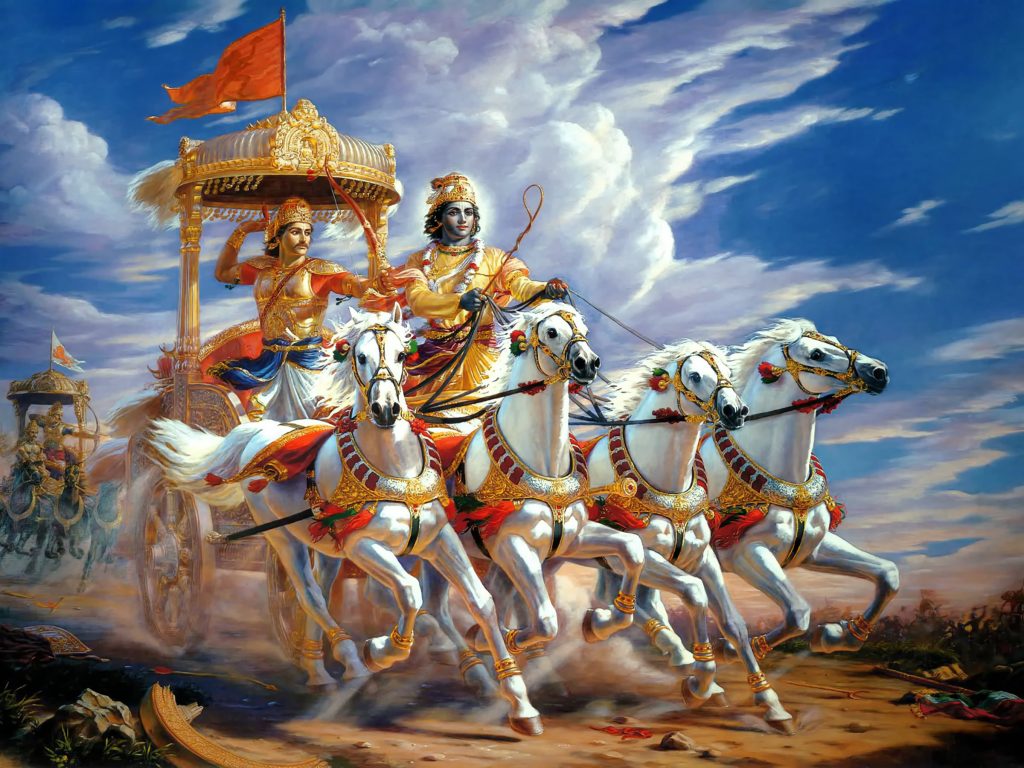
Parenting lessons a plenty from Bhgavad Gita
– Smitha Rao
I was a mother of two little children when I turned to Gita. It was a difficult phase in my life where my conscience was put to test and demanded introspection of my actions. I had to dig deep to find my true self organically. As a parent, the consequences of my actions would definitely have a bearing on physical, emotional and moral well being of my children.
As time went by, my children had some very pragmatic questions about Bhagavdh Gita. My daughter, then six, had asked her grandmother who diligently watched Gita Pravachana on TV with great devout as to why would her grandma consider Gita supreme as it is rendered by a notorious boy from Mathura? Another interesting observation by most kids in my family was, why would Bhagvadh Gita book always finds its place at the pooja room or someplace considered special and holy? Why was the book dealt with so much reverence?

I should admit, because of lack of exposure to Gita as a child or even as an adult, I had no instant or definitive answers to such questions. Having said that, children had asked those questions out of curiosity but had no real intention to find the answers. Nevertheless, the mysticism about Gita is present even today. Any one-time explanation about Gita is not adequate to internalize it and adopt it. A constant dialogue about Gita at appropriate circumstances unravels its essence, its simplicity and its merit.
I am noticing, slowly the awareness about Gita is expanding. Unlike a couple of decades ago, where Gita recitation was a predominant way of learning Gita, not understanding its essence in particular, today we have lots of books, discussions and resources targeting young minds and influencing them with our Belief system (Dharma). Irrespective of these abundant platforms children often find Gita as a knowledge form for when they grow up. I believe, unless some living room conversations happen regularly, the implementation of knowledge will be difficult.
How and why would a parent bring in Gita during the early childhood years of their children? How can children comprehend the principles or practices of Gita? Aren’t they at a tender age to do so? My parenting mind is still puzzled with these thoughts. If I have to go with Gita, I have to resolute to doing my job as a parent without getting distracted. With honest efforts, results are sure to show and this is my approach to introducing Gita to my kids. The parent has to be prepared for this perpetual effort as Gita prompts both the parties, giver and the receiver with deeper perspective of Dharma every time.
karmaṇy-evādhikāras te mā phaleṣhu kadāchana |
mā karma-phala-hetur bhūr mā te saṅgo ’stvakarmaṇi || (2:47)
Perform your duties without fail. Put in your best foot forward and be content. Action is more important than results.
There have been many circumstances when my son or daughter have endlessly argued with me about the translations and explanations of Gita. My behaviour as an adult is judged by my children who would definitely recite a shloka in question but refuse its application. The idea is to let it happen. As they grow up and find themselves with no defending parent around, there is a good chance they would think of what their parents told them when they were young about Dharma in Gita, emotional balance or action over results (Karma) in Gita, for they would have subconsciously connected with it, in the process of evaluating right and wrongs as they judged us.
sukha-duḥkhe same kṛitvā lābhālābhau jayājayau |
tato yuddhāya yujyasva naivaṁ pāpam avāpsyasi || (2:38)
We should attend to our duties with greater responsibility. We can do so by treating good and bad times, profit and loss, victory and failure alike, by staying neutral in our mind.

As I started putting together this piece, I recollect yet another interesting question asked by a kid, rather a young adult in his later teen. It was a discussion organised by a popular group. The boy in question had asked “If Krishna was God, and knew about Duryodhana, he could have given Duryodhana Geethopadesha. Why Arjuna? Wasn’t Krishna kind enough towards Duryodhana?” I have tried to recollect the answer but I couldn’t. I probably remember the question because it was a pertinent one for me too at his age. From my own understanding of the Gita I have
discovered an answer. As I have mentioned earlier, I had zero exposure to Gita. When my friends at school won prizes at Gita recitation competitions, I was part jealous, totally ignorant and definitely a rebel, trying to excel at something else but Gita recitation. That was being part Duryodhana as well, I guess. The receiver has to seek, question, analyse and accept what is offered. Now, Arjuna was seeking it, despite being blessed with valour and competence, he was contemplating his actions and his thoughts. Hence, Gita is a Samvada (conversation). It is not one sided. It is a rational discussion of right versus wrong. Tarka (argument with reasoning) is a part of our religious beliefs and Gita symbolises it. Our children can start by learning to seek, if not learn everything through us, just the way the proverb goes, teach a man to fish and you feed him for life.
krodhād bhavati sammohaḥ sammohāt smṛiti-vibhramaḥ|
smṛiti-bhranśhād buddhi-nāśho buddhi-nāśhāt praṇaśhyati || (2:63)
Anger can be man’s worst enemy. It leads to clouded judgment. It causes confusion and bewilderment which in turn ruins intellect. When one loose intelligence they can never prosper.
My parents’ strategy to raise us is ‘each one to his own’. Even as children, we were forgiven but we were held responsible for our actions. I have qualms about it even now, though I claim it as a lesson. I am sure my children will have qualms about our parenting too. That is how it is. The positives and negatives have to co-exist. They only take turns in showing up.
mātrā-sparśhās tu kaunteya śhītoṣhṇa-sukha-duḥkha-dāḥ |
āgamāpāyino ’nityās tans-titikṣhasva bhārata || (2:14)
Oh Kaunteya! (son of Kunti) Just the way, we have summer and winter that follows each other, our happiness and sadness are also followed by each other. If we consider the two (good times and difficult times) as a temporary change we can experience best and worst times of our lives without being disturbed.
I am slowly understanding the concept of karma. Every individual is born with his or her own karmic memory. ‘Karma follows’, simply means, a person’s baggage from his previous birth. The good and the bad. If not for his prarabdha karma (bad karma), A character like Bhishma with his stance and decorum wouldn’t be on the side of Adharma (metaphor for kauravas) or without his punya (good karma) he wouldn’t be blessed with supreme of all, the viswaroopadarshana of Narayana. Everything to its own. Our children are born with such baggage. We are not the one to unpack it. We can only give them an idea of how or sometimes, why. They need to understand the balance. That balance is in the mind, a very personal space. It can only be nudged to think right externally but its host is the only one that can control it.
bandhur ātmātmanas tasya yenātmaivātmanā jitaḥ |
anātmanas tu śhatrutve vartetātmaiva śhatru-vat || (6:6)
The mind is one’s best tool. The mind can be a man’s friend when controlled and focused on right things else, it can be man’s worst enemy.
With this, I have one last thing to share. It is never too early or never too late to understand or learn anything in life. We only have to subject and surrender ourselves to that thought. If the intent is honest the fruits are sure to be good.






Well written. Captures the observations and question of many kids and answers it neutraly without taking sides. Looking for more.